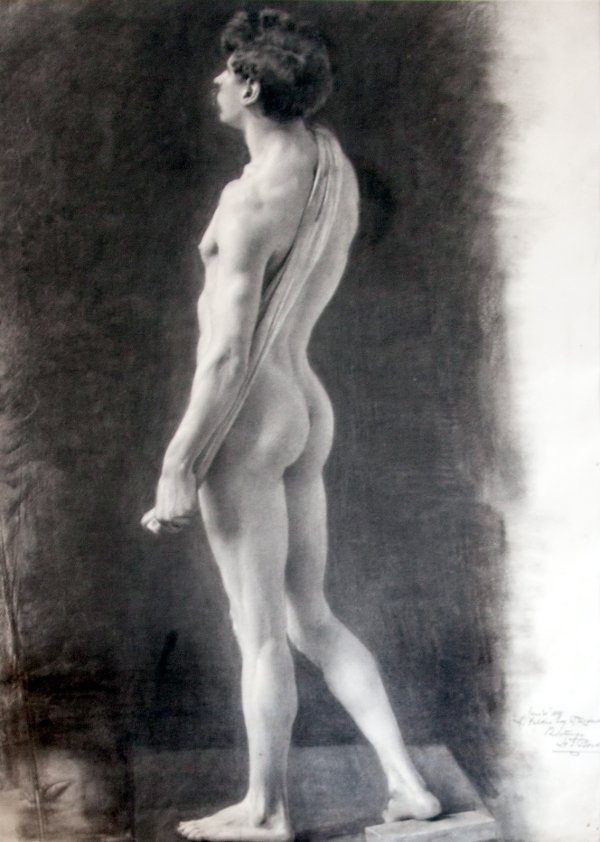Life Drawing
Details about Bosdet's life drawings, which he regularly showed at Royal Academy Summer Exhibitions.
The Greeks perfected the nude in order that man might feel like a god, and in a sense this is still its function, for although we no longer suppose that God is like a beautiful man, we still feel close to divinity in those flashes of self-identification when, through our own bodies, we seem to be aware of a universal order. Kenneth Clark
In 1873 Henry Bosdet enrolled as a student at the Royal Academy at the age of 17 and later became Curator of the Life School. He regularly showed his drawings at the Royal Academy Summer Exhibitions.

In an article in the Telegraph published in 2002 Will Bennett reports on the sale of 19 pencil and charcoal Bosdet nudes, pointing out that each drawing carried an inscription in Bosdet’s handwriting detailing the date, the number of sittings, and the name of a leading artist of the time (including Sir John Everett Millais, John William Waterhouse, and Frank Dicksee). These Visitors were Royal Academicians who were elected to teach at the Schools setting poses and projects for students to carry out.
In a 2013 publication the Royal Academy describes the difficulty of studying life drawing in the 1880s:
‘At this time the studentship had recently been officially divided into two 'terms' of three years each. During the first three years he would have followed the established academic tradition of drawing casts of Ancient Greek and Roman sculptures in the 'Antique School' while also attending the 'Preliminary School' to paint or model heads and drapery. Access to the Life Class, however, remained restricted. Students had to successfully pass through the first stage of the course before being allowed to draw from the nude model. During the late 19th century there was considerable moral concern surrounding the practice of life drawing and in the 1880s the Academy's female students were still excluded from drawing the nude altogether. As late as 1871, the Academy's rules also stipulated that even male students needed to be over twenty years of age or married to be allowed to draw the female model.’ Royal Academy

In his book, Victorian Painting, Lionel Lambourne described the lively correspondence during the 1880s in The Times on the subject of nudity launched by a diatribe from ‘A British Matron’. Such views were ridiculed by the music hall singer, Florrie Ford:
My old man is a very clever chap
He’s an artist in the Royal Academy
He paints pictures from morning until night
Paints them with his left hand, paints them with his right
And all his subjects - take a tip from me
Are very, very Eve and Adamy
And I’m the model who has to pose for his pictures every day ….
With a little red nose
And very little clothes
And the stormy winds do blow. Florrie Ford
In 1893 women students were at last allowed to draw from the male nude but they had to adhere to a list of conditions to preserve the proprieties:
‘It shall be optional for Visitors in the Painting School to set the male model undraped, except about the loins, to the class of Female Students. The drapery to be worn by the model to consist of ordinary bathing drawers, and a cloth of light material 9 feet long by 3 feet wide, which shall be wound round the loins over the drawers, passed between the legs and tucked in over the waistband; and finally a thin leather strap shall be fastened round the loins in order to ensure that the cloth keep its place.’ Royal Academy
In his book, Lambourne also traced the new-found interest in male nudes. If the classical nude had earlier been established as a worthy and respectable subject, ‘with the emergent Aesthetic Movement interest began to shift from the ‘female form divine’ to the male nude... . and by the 1880s the Aesthetic Movement’s preoccupation with classical themes had created a demand for allegorical nude subjects which tempted many artists unfamiliar with such themes to try them out.’